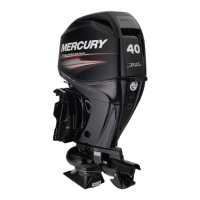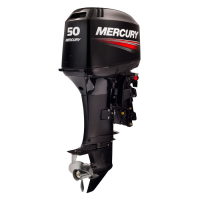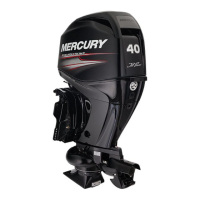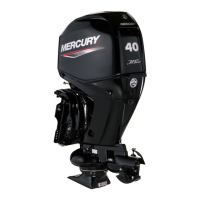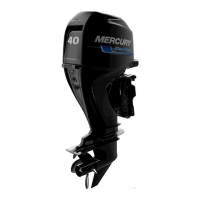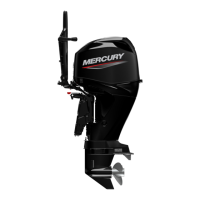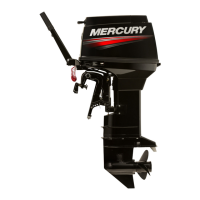MAINTENANCE
90-857046R1 NOVEMBER 2001 Page 1B-3
Inspection And Maintenance Schedule
To keep your outboard in the best operating condition, it is important that your outboard re-
ceive the periodic inspections and maintenance listed in the Inspection and Maintenance
Schedule. We urge you to keep it maintained properly to ensure the safety of you and your
passengers and retain its dependability.
WARNING
Neglected inspection and maintenance service of your outboard or attempting to
perform maintenance or repair on your outboard if you are not familiar with the cor-
rect service and safety procedures could cause personal injury, death, or product
failure.
Before Each Use
1. Check engine oil level.
2. Check that lanyard stop switch stops the engine.
3. Visually inspect the fuel system for deterioration or leaks.
4. Check outboard for tightness on transom.
5. Check steering system for binding or loose components.
6. Visually check steering link rod fasteners for proper tightness.
7. Check propeller blades for damage.
After Each Use
1. Flush out the outboard cooling system if operating in salt or polluted water.
2. If operating in salt water, wash off all salt deposits and flush out the exhaust outlet of the
propeller and gear case with fresh water.
Every 100 Hours of Use or Once yearly, Whichever occurs first
1. Lubricate all lubrication points. Lubricate more frequently when used in salt water.
2. Change engine oil and replace the oil filter. The oil should be changed more often when
the engine is operated under adverse conditions such as extended trolling.
3. Inspect thermostat visually for corrosion, broken spring, and to determine that the valve
is completely closed at room temperature. If questionable, inspect thermostat as outlined
in Section 4B “Thermostat”.
4. Inspect and clean spark plugs.
5. Check engine fuel filter for contaminants.
6. Check engine timing setup.
7. Check corrosion control anodes. Check more frequently when used in salt water.
8. Drain and replace gear case lubricant.
9. Lubricate splines on the drive shaft.
10. Check and adjust valve clearance, if necessary.
11. Check power trim fluid.
12. Inspect battery.
13. Check control cable adjustments.
14. Inspect timing belt.

